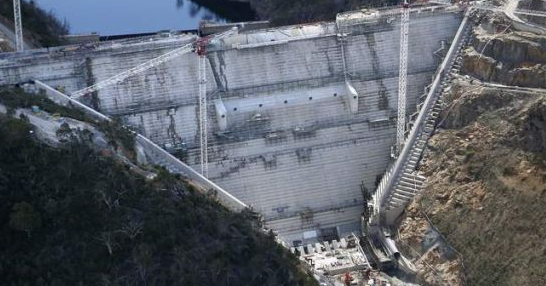ACTEW Corporation and Actew AGL partnered with GHD, Abigroup and John Holland Group to form the Bulk Water Alliance and deliver the enlarged Cotter Dam. The enlarged Cotter Dam expanded the storage capacity of the Cotter Reservoir from 4 gigalitres to approximately 78 gigalitres – a twenty-fold increase – and was sited downstream of the existing dam. The new 80 metre high dam was constructed of roller compacted concrete (RCC) and was the highest dam of its type in Australia. While with GHD, Graeme Hastie and James Aldred undertook studies into the technical aspects of the RCC and the local aggregate source for this larger reservoir.

Because of the low workability of RCC, formed surfaces are typically characterized by significant voids, reduced strength, and poor durability. Consequently, a facing system is used for most RCC dams. The GERCC method has several potential advantages over the use of conventional concrete facing. These include reduced degree of shrinkage and thermal cracking caused by lower cement contents as well as a higher density and better grading compared to conventional concrete making the GERCC concrete more compatible with the underlying RCC. The most important benefit is that it significantly reduces potential problems of variable bond of conventional concrete to RCC caused by different rates of set, weather conditions and management of two different concrete types on site, plant breakdown etc.
A testing program was carried out to determine the performance of the RCC and the grout enriched roller compacted concrete (GERCC). It involved testing using Australian Concrete Standards, International Standards and ad-hoc procedures. Where appropriate performance acceptance of the RCC and GERCC was based on the relative performance of conventional concretes of similar strength.
While according to the local standard the aggregates would be considered as unsuitable for concrete production, a similar coarse aggregate was used in the existing dam which suggested that the coarse aggregate is satisfactory. Graeme was able to demonstrate that the local aggregates could be successfully used which was of great commercial and environmental benefit to the project.